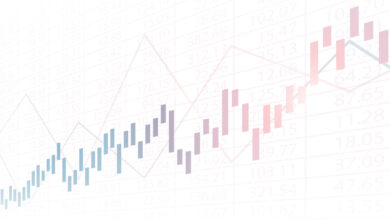Economic inactivity challenges persist despite Covid rebound

Although unemployment has fallen in the first half of 2024, Northern Ireland’s level of economic inactivity remains significantly higher than the UK average.
The most recent Labour Market Report, published in August 2024, shows that the economic inactivity rate, i.e. the proportion of people aged 16 to 64 who were not working and not seeking or available to work, increased over the quarter and decreased over the year to 27.1 per cent.
The UK economic inactivity rate for April to June 2024 was estimated at 22.2 per cent, broadly similar to the rate of 22. 6per cent in the Republic.
Over the last 15 years, economic inactivity in Northern Ireland has been consistently higher than the UK average, with more variability in economic inactivity in Northern Ireland than the UK. Economic inactivity in Northern Ireland peaked in 2009 at over 31 per cent, compared to the UK rate of almost 24 per cent at the beginning of 2010.
Low-paid jobs
While unemployment is low, the number of people who are in low-paid work – sometimes termed ‘underemployed’ – outnumbers that in Britain. Speaking in January 2023, Nevin Economic Research Institute economist Lisa Wilson stated: “While Great Britain may be experiencing a pandemic-induced increase in economic inactivity, it does not appear that the pandemic has been the principal driver of that trend in Northern Ireland. The movements in Northern Ireland would appear to be more connected with structural causes of economic inactivity which have been a feature of Northern Ireland’s labour market for many years.”
The most recent hourly pay report shows that the average hourly rate for all workers in Northern Ireland is £13.39. Disparities exist in the sub-data, for example, the hourly median rate for full-time workers (£14.79) is significantly higher than for part-time workers (£10.68) and, overall, males (£13.99) tend to earn more per hour than females (£12.82).
The distribution of earnings in Northern Ireland also tells a story. The lowest paid 10 per cent of workers in Northern Ireland earn an average of £9.51 per hour, compared to the best paid 10 per cent, who earn around £27 per hour. Both figures are significantly lower relative to the UK as a whole, or the Republic of Ireland.
Between 2009 and 2019, the trend for both the UK and Northern Ireland economic inactivity rates was generally downward. From the onset of the Covid pandemic, the report asserts that both UK and Northern Ireland economic inactivity rates increased. Since early-2021 however, the trends have varied, with the Northern Ireland rate trending downwards whilst the UK rate is trending upwards. Over the last year, the economic inactivity rate in Northern Ireland has seen a decrease of 0.1 per cent whilst the UK rate has seen an increase of 0.8 per cent.
The most recent economic inactivity rates for Northern Ireland (27.0 per cent) and the UK (22.3 per cent) were 1.1 per cent and 1.6 per cent higher than their pre-pandemic equivalents in November-January 2020.
UK economic inactivity is driven by older people leaving the labour market earlier. However, in Northern Ireland, this phenomenon is observed across the board, which suggest a larger structural problem driving economic inactivity. In Northern Ireland, this differentiation is characterised by a higher rate of people who are long-term sick which is potentially linked to the underinvestment in public services and the health crisis showing out in the labour market.
Economically inactive
The Northern Ireland economic inactivity rate (aged 16 to 64) for March to May 2024 (the most recent quarter for which statistics are available at the time of print) was estimated at 27.1 per cent, which was a decrease of 0.7 per cent over the year.
The number of economically inactive people (age 16 and over) in Northern Ireland was estimated at 618,000, which was:
- up 6,000 from previous quarter (December 2023 to February 2024); and
- down 3,000 from the same period last year.
Annual changes by sex (for those aged 16 to 64) showed:
- a decrease of 0.2 per cent over the year in the male economic inactivity rate to 22.7 per cent; and
- a decrease of 1.5 per cent over the year in the female economic inactivity rate to 30.3 per cent.
UK regional comparison:
- The Northern Ireland economic inactivity rate (aged 16 to 64) of 27.1 per cent was 4.9 per cent above the most recent UK rate of 22. per cent.
- Northern Ireland is the third highest of the twelve UK regions.
While employee jobs have also increased to a new series high. Unemployment and economic inactivity rates have both decreased and the employment rate has increased.
HMRC payroll data shows that payrolled employee numbers increased by 0.1 percent over the month and increased by 2.3 per cent over the year. Payrolled earnings decreased by 3.5 per cent over the month and were 7.9 per cent higher than July 2023.
Households reported, via the Labour Force Survey (LFS), over the year to April to June 2024, a 1.2 per cent increase in the employment rate (to 71.6 per cent), a 0.7 per cent decrease in the economic inactivity rate (to 27.1 per cent), and a 0.7 per cent decrease in the unemployment rate (to 1.9 per cent).
The total number of hours worked in April to June 2024 increased by 2.7 per cent over the year. This is 0.6 per cent below the pre-pandemic position recorded in November-January 2020.
The most recent Quarterly Employment Survey shows that employee jobs in Northern Ireland increased over the second quarter of 2024 and the year to reach a new series high, 824,300 jobs, in March 2024. Quarterly increases in employee jobs were recorded within the construction, services, and other industry sectors. Employee jobs decreased over the quarter within the manufacturing sector. Over the year from Q2 2023 to Q2 2024, employee jobs increased across all four sectors.
In July 2024, the Department for the Economy was notified of 40 confirmed redundancies, bringing the rolling twelve-month total of confirmed redundancies to 2,550. There were 2,820 redundancies proposed in the 12 months to July 2024.
Unemployment
- The Northern Ireland unemployment rate for April to June 2024 decreased over both the quarter and the year to 1.9 per cent, and
- the most recent UK unemployment rate for April to June 2024 was estimated at 4.2 per cent.
Over the last 15 years, the UK unemployment rate peaked at 8.4 per cent in late-2011, while the Northern Ireland unemployment rate peaked at 8.3 per cent in early-2013. Following these peaks, both unemployment rates showed a downward trend until the end of 2019. After rises during the early part of the pandemic, both rates have since decreased. Over the most recent year to April to June 2024 the Northern Ireland unemployment rate decreased by 0.7 per cent to 1.9 per cent, the lowest rate in this time period, while the UK unemployment rate decreased by 0.1 per cent to 4.2 per cent.
The Northern Ireland unemployment rate (age 16 and over) for the period April to June 2024 was estimated at 1.9 per cent. This was:
- a decrease of 0.2 per cent over the quarter; and
- a decrease of 0.7 per cent over the year.
The number of unemployed people (age 16 and over) in Northern Ireland was estimated at 17,000, which was:
- down 2,000 over the quarter; and
- down 6,000 from the same period last year.
UK regional comparison:
- The Northern Ireland unemployment rate (age 16 and over) of 1.9 per cent was 2.2 per cent below the most recent UK rate of 4.2 per cent, and
- Northern Ireland is the lowest of the twelve UK regions.
Employment
- The Northern Ireland employment rate for April to June 2024 decreased over both the quarter and year to 71.6 per cent, and
- the most recent UK employment rate for April to June 2024 was estimated at 74.5 per cent.
Over the last 15 years, the Northern Ireland employment rate has been consistently below the UK rate. Although showing a similar trend, the fall in the employment rate in Northern Ireland between 2019 and 2021 was steeper than the fall in the UK rate. The most recent Northern Ireland employment rate (71.6 per cent) was the highest rate since the pre-pandemic rate of 72.3 per cent recorded in November-January 2020.
The most recent Northern Ireland employment rate (aged 16 to 64) for the period April to June 2024 was estimated at 71.6 per cent. This was:
- A decrease of 0.3 per cent over the quarter; and
- an increase of 1.2 per cent over the year (not statistically significant).
The number of employed people (age 16 and over) in Northern Ireland was estimated at 878,000, which was:
- down 1,000 from last quarter; and
- up 20,000 from the same period in 2023.
Annual changes by sex (for those aged 16 to 64) showed that:
- the male employment rate (74.4 per cent) increased by 0.5 per cent over the year; and
- the female employment rate (68.9 per cent) increased by 1.4 per cent over the year.
UK regional comparison:
- The Northern Ireland employment rate (aged 16 to 64) of 71.6 per cent was 3.0 per cent below the most recent UK rate of 74.5 per cent, and
- Northern Ireland is the third lowest of the twelve UK regions.
Self-employment:
- In April to June 2024, there were 115,000 self-employed, an increase of 21,000 (+22.0 per cent) on a year ago, and 19,000 lower (-13.9 per cent) than the pre-pandemic figure in October to December 2019, and
- the proportion of self-employed people (13.2 per cent) remains below the pre-pandemic proportion (15.5 per cent recorded in October to December 2019).
Employment by age:
- In March to May 2024, those aged 35 to 49 had the highest employment rate (83.6 per cent), whilst those aged 16 to 24 had the lowest (49.4 per cent), and
- compared to the pre-pandemic rates in October to December 2019, the employment rate for those aged 50 to 64 saw the largest, and only, increase (by 0.7 per cent, from 64.2 per cent to 65.0 per cent), whilst the rate for those aged 16 to 24 saw the largest decrease (by -6.3 per cent, from 55.7 per cent to 49.4 per cent).





